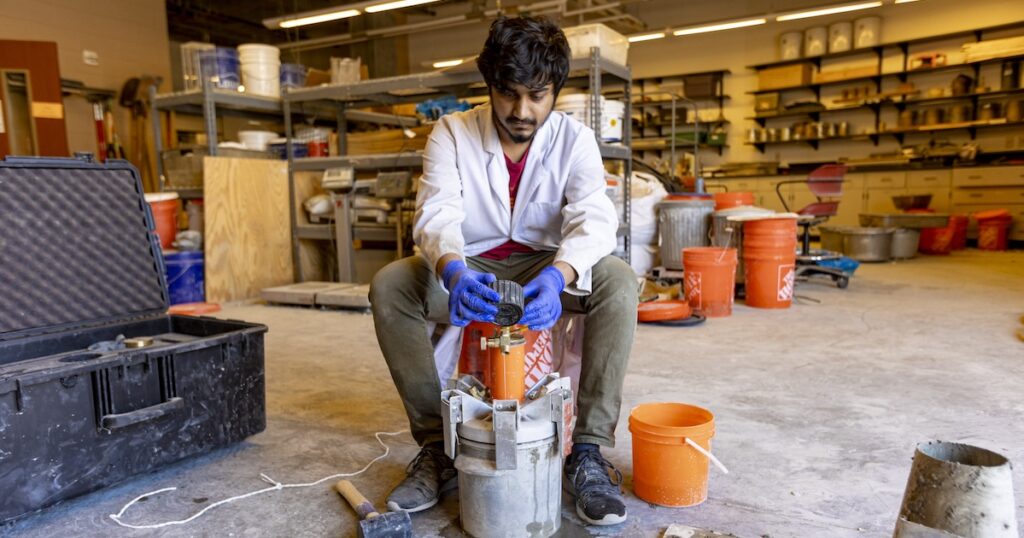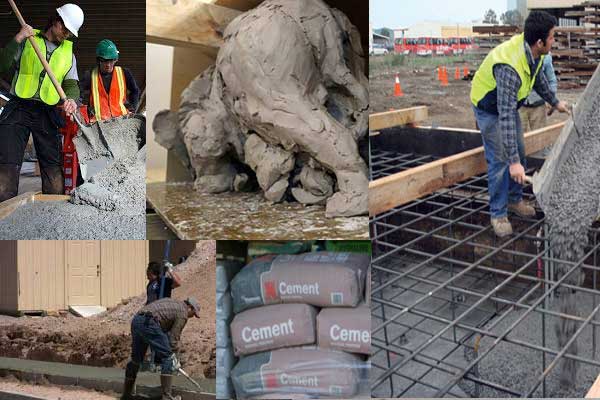The Essential Role of Concrete Foundation in Structural Stability and Longevity
When it concerns building a property, the foundation is a lot more important than you might believe. Concrete foundations offer unrivaled toughness and resilience, ensuring your structure can withstand different environmental difficulties. Without a solid base, you run the risk of prospective issues like shifting or fracturing, which can jeopardize security and value. Understanding the subtleties of concrete structures can be the trick to protecting your financial investment for many years to find. So, what should you think about next?
Comprehending the Significance of Concrete Foundations
Concrete foundations are essential to the general stability of any kind of framework, as they offer the essential assistance needed to endure numerous tons and environmental problems. When you consider constructing a home or an industrial area, the foundation is the first point you should think about. It acts as an obstacle versus dampness, protecting your residential property from water damage. A well-placed concrete foundation additionally protects against settling and shifting, which can lead to splits in wall surfaces and floorings. You'll wish to guarantee that the foundation is effectively created and reinforced, as this affects the longevity of your structure. Furthermore, a solid structure can enhance power efficiency by lowering air leaks. Keep in mind, neglecting the significance of a concrete structure can lead to expensive fixings down the line. Spending in a quality foundation upfront is necessary for the integrity and sturdiness of your framework.
Advantages of Concrete Foundations for Structural Stability
While lots of variables add to a building's structural stability, concrete structures supply unmatched resilience and stamina. You'll appreciate that concrete can stand up to severe weather, resisting both moisture and temperature changes. This durability suggests your framework is much less most likely to experience cracking or shifting in time, which can jeopardize its safety.Additionally, concrete's integral weight offers a strong base, stopping motion throughout natural events like earthquakes or floods. When you choose a concrete structure, you're likewise going with reduced upkeep; unlike timber, it won't rot or attract pests, saving you time and cash in repairs.Moreover, concrete's fire resistance supplies included security, ensuring your structure can sustain heats without substantial damages. In general, investing in a concrete foundation suggests you're focusing on the long-lasting stability and honesty of your structure, making it a smart choice for any building and construction job.
Common Sorts Of Concrete Foundations
When it concerns building structures, comprehending the common sorts of concrete structures can help you make informed options for your job. The most widespread types consist of slab-on-grade, crawl area, and full cellar foundations.A slab-on-grade foundation is a simple, cost-effective alternative, where a thick concrete slab is put directly on the ground. This kind works well in cozy climates, as it minimizes warm loss.Crawl space structures elevate the home a little above ground, permitting ventilation and accessibility to plumbing and electric systems. This design can aid avoid dampness issues.Full basement structures provide added living or storage area while giving exceptional architectural support. They call for more excavation and are typically utilized in colder environments to stop frost heave.
Aspects to Think About When Creating a Concrete Foundation

Best Practices for Putting Up Concrete Foundations
When you're setting up a concrete foundation, correct site prep work is vital to assure stability (WCGE commercial concrete). You'll likewise need to comprehend support techniques to enhance stamina and durability. Lastly, don't ignore the healing procedure, as it plays a fundamental role in accomplishing a solid structure
Site Preparation Significance
It might seem straightforward, correct site prep work is essential for ensuring a strong and sturdy concrete foundation. Start by getting rid of the area of any particles, greenery, or organic product that could endanger the structure's integrity. Next off, examine the soil kind and compaction; you could require to excavate or include materials to develop a steady base. Degree the ground to assure even weight distribution and prevent working out issues later. Mounting appropriate drainage systems is likewise important to prevent water buildup, which can deteriorate the foundation in time. Finally, define the foundation's measurements precisely to guide the pouring procedure. By adhering to these steps, you'll establish the phase for an effective concrete foundation that stands the examination of time.
Reinforcement Methods Explained
When the website is correctly prepared, the following action in guaranteeing a strong concrete foundation involves carrying out reliable reinforcement methods. You need to start by utilizing steel rebar, which supplies tensile toughness and helps avoid fracturing. Lay the rebar in a grid pattern, making certain it rises utilizing spacers to preserve correct coverage. Furthermore, think about making use of wire mesh for extra support, particularly in locations based on hefty lots. Do not forget to connect the rebar crossways firmly with wire. For bigger structures, fiber reinforcement can improve longevity, minimizing the risk of shrinkage cracks. Always adhere to local building codes and standards to make certain conformity. By applying these support techniques, you'll substantially improve your foundation's strength and durability, laying a strong foundation for your framework.
Healing Refine Fundamentals
To ensure your concrete structure remedies appropriately, it is essential to preserve sufficient dampness and temperature slate stamped concrete patio level problems immediately after putting. Start by covering the surface area with a damp cloth or plastic sheet to retain moisture. This maintains the concrete hydrated, avoiding cracks and making certain stamina. You ought to additionally check the temperature level; optimal curing problems are between 50 ° F and 90 ° F. If it's too warm, mist the surface area regularly to stop fast evaporation. For winter, consider making use of insulating coverings to preserve heat. Go for a curing duration of at the very least 7 days, as this is important for optimum stamina development. By complying with these best methods, you'll enhance your structure's sturdiness and longevity, making sure structural stability for years to find.
Upkeep of Concrete Foundations for Long Life
To keep your concrete structure solid and long lasting, normal assessments are essential. You must also ensure effective drain remedies are in location to prevent water damages. If you identify any fractures, resolving them promptly will save you from bigger troubles down the line.

Normal Examinations and Analyses
While routine evaluations and assessments could look like a job, they're crucial for preserving the stability of your concrete foundation. By consistently inspecting for cracks, shifts, or indicators of wear, you can catch potential concerns before they escalate right into expensive repair work. Look for any type of water pooling around the structure or unusual settling, as these can signify underlying issues. It's likewise important to keep track of any kind of modifications in your home's structure, like doors that stick or home windows that don't open efficiently. Keeping a record of your assessments aids track modifications in time, enabling positive upkeep. Ultimately, these analyses guarantee your structure remains steady, sustaining the longevity and security of your entire structure. Do not overlook this important aspect of homeownership!
Efficient Water Drainage Solutions
Regular assessments can reveal problems like water drainage problems that might endanger your concrete structure's stability. To stop water buildup, guarantee your rain gutters and downspouts straight water away from the foundation. Installing French drains can successfully reroute surface and groundwater, lowering pressure on your foundation walls. In addition, grading the soil around your home assists assure that water flows away, instead of merging near your foundation.Consider making use of sump pumps in locations prone to flooding, as they actively eliminate excess water. Regularly look for obstructions in drainage systems and clear them immediately. You'll shield your foundation's integrity and longevity by taking these positive actions. Remember, efficient drain options are essential for preserving a solid, durable concrete foundation.
Prompt Fracture Fixes
When you see splits in your concrete structure, resolving them without delay is essential for maintaining its longevity. Small cracks can rapidly progress into bigger problems, jeopardizing the architectural stability of your home. Consistently evaluate your foundation for signs of damage, such as horizontal or upright splits. If you detect any type of, don't wait-- repair them instantly. Resources You can use epoxy injections or concrete patching substances, which are effective for securing cracks. Constantly adhere to the manufacturer's instructions and consider speaking with an expert for substantial damages. Keep in mind, timely repair services not only enhance your structure's longevity however also conserve you money in the future by stopping more extensive repair services down the line. Stay aggressive, and your foundation will certainly stay solid and safe.
Addressing Typical Issues With Concrete Structures
Concrete foundations can deal with numerous problems with time, making it important to identify and resolve them promptly. One of one of the most common issues is cracking, which can happen as a result of temperature variations or settling soil. If you see cracks, it's necessary to evaluate their dimension and deepness; small fractures can usually be sealed, while larger internet ones might call for professional evaluation.Water invasion is an additional major issue. Excess dampness can lead to mold development and architectural degeneration. Guarantee appropriate water drainage around your structure to reduce this danger. In addition, seek signs of moving or bowing walls, as this can show underlying problems with your foundation's stability.Regular inspections are fundamental to capture these issues early. If you identify any worrying indications, do not hesitate to get in touch with a structure specialist. By staying proactive, you can maintain the integrity and durability of your concrete foundation, assuring your home remains risk-free and secure.
Regularly Asked Questions
Exactly How Does Soil Type Affect Concrete Foundation Performance?
Soil kind substantially impacts concrete foundation efficiency. If you've obtained expansive clay, as an example, it can trigger shifting and fracturing. Sandy soil could result in settling. Recognizing your soil aids ensure a secure structure.
Can Concrete Foundations Be Fixed if Harmed?
Yes, you can fix damaged concrete structures. Depending upon the degree of the damage, strategies like epoxy injection or piece jacking can restore stability. It's finest to seek advice from a specialist for effective options.
What Is the Regular Life-span of a Concrete Structure?
A concrete structure commonly lasts 30 to 100 years, depending upon aspects like soil conditions, environment, and upkeep. You'll want to maintain an eye on it to ensure it remains healthy throughout its life expectancy.
Are There Choice Materials to Concrete for Foundations?
Yes, there are options to concrete for foundations, like steel, lumber, or even recycled products. Each alternative has special advantages and downsides, so you should consider your project's specific requirements when selecting the appropriate product.
How Does Climate Effect Concrete Foundation Toughness?
Environment considerably influences concrete structure sturdiness (West Coast GE Concrete contractors). Severe temperature levels, wetness, and freeze-thaw cycles can compromise the product, leading to splits and architectural issues. You should think about local environment conditions when intending your structure to ensure long-lasting efficiency